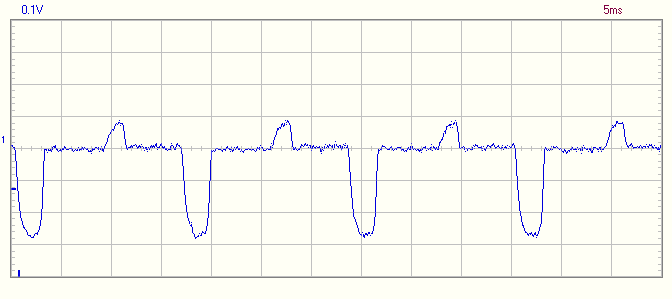WRT the Texar supply and load current imbalance:
I think I have a better idea of why a symmetrically-loaded transformer - producing more output power - is quieter when operating near its maximum rating than one when the load is imbalanced.
With no load on the negative rail the equivalent circuit looks like a full-wave center tap rectifier shown in the example above.
Current, some of it DC, returns through the center tap.
When both outputs are loaded equally there is no CT current.
The load is connected like the full-wave four diode bridge example above.
Current circulates from the positive output to the negative output; the equivalent circuit resembles a four diode full-wave bridge.
When the load current is balanced I can't measure DC in the secondary - only AC current.
Look at the table entry for "Transformer Secondary VA Rating" and compare the VA/PDC ratios for the FW CT rectifier and the four diode bridge.
For resistive loads the VA/PDC for the full-wave CT is 1.57 versus the 1.23 for the four diode FW bridge.
The FW CT configuration is far less efficient - it requires greater derating.
Accounting for DC may be the factor that increases the VA requirement for the FW CT topology.
Balancing the loads shifts the topology from one resembling a FW CT rectifier to that of a four diode bridge.
When operating as a four diode bridge efficiency is greater.
Not only does the transformer operate more efficiently there doesn't appear to be DC setup in the secondary.
Though its counter-intuitive increasing the load current - by loading the opposing output symmetrically reduced saturation in the Texar's marginal transformer VA rating.
In addition the marked increase in even-order and high-order harmonics points to bias - DC bias - in the core when the FW CT configuration is asymmetrically-loaded.
I remain convinced that if one supply has significantly higher current requirements that its better to use separate transformer secondaries and rectifier bridges.
Doing this will also reduce transformer VA requirements.


